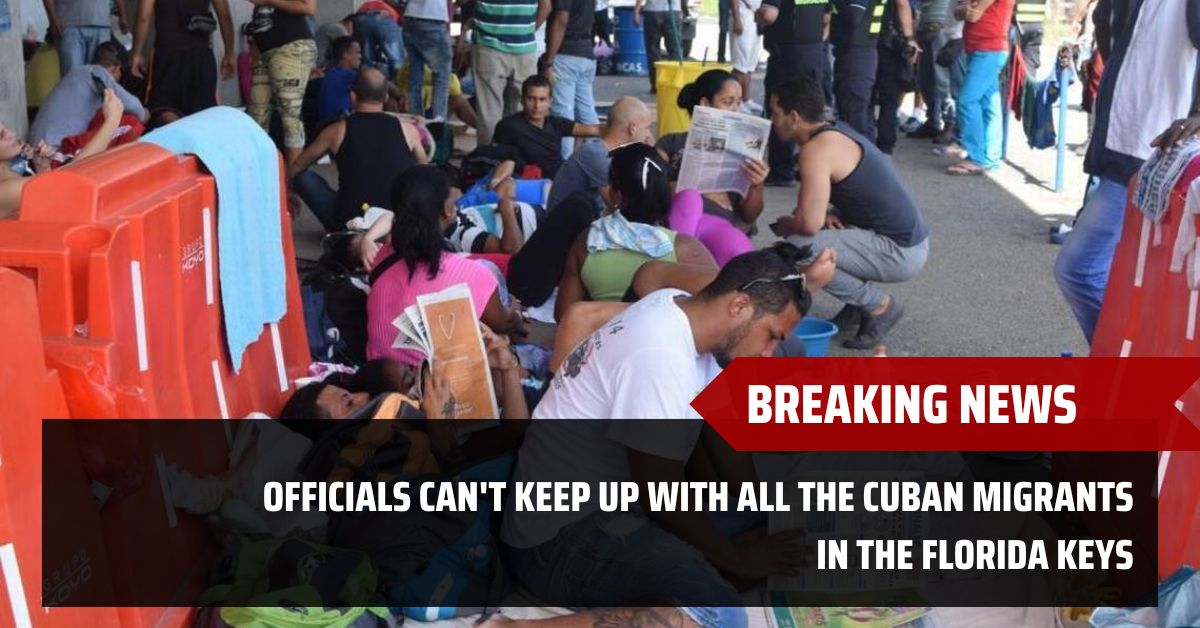Dry Tortugas National Park, a group of seven islands 70 miles (110 kilometers) west of Key West, remained closed to visitors Wednesday as the U.S. evacuated migrants who came ashore there earlier in the week. Normally, about 255 tourists a day arrive by boat and seaplane to tour the islands and Fort Jefferson, which was built 160 years ago. Officials did not know when it would reopen.
In Marathon, some 45 miles (72 kilometers) northeast of Key West, about two dozen migrants were being held in a fenced-in area outside a Customs and Border Protection station where tents had been erected to provide shade. When Associated Press journalists tried to speak with the migrants through the fence, Border Patrol employees told them to leave.
Ramón Raul Sanchez with the Cuban-American group Movimiento Democracia went to the Keys to check on the situation. He told the AP that he met a group of 22 Cubans who had just arrived. They were standing along the main road, waiting for U.S. authorities to pick them up. Sanchez and Keys officials said the Biden administration needs a more coordinated response.
“There is a migration and humanitarian crisis, and it is necessary for the president to respond by helping local authorities,” Sanchez said. Cubans are willing to take the risk because those who make it to U.S. soil almost always get to stay, even if their legal status is murky.
They also arrive by land, flying to Nicaragua, then traveling north through Honduras and Guatemala into Mexico. In the 2021-22 fiscal year, 220,000 Cubans were stopped at the U.S.-Mexican border, almost six times as many as the previous year.
Callan Garcia, a Florida immigration attorney, said most Cubans who reach U.S. soil tell Border Patrol agents they can’t find adequate work at home. They are then flagged “expedited for removal” as having entered the country illegally. But that does not mean the actually will be removed quickly — or at all.

Because the U.S. and Cuba do not have formal diplomatic relations, the American government has no way to repatriate them. Cubans are released but given an order that requires them to contact federal immigration authorities periodically to confirm their address and status. They are allowed to get work permits, driver’s licenses and Social Security numbers, but cannot apply for permanent residency or citizenship.
Garcia said that can last for the rest of their lives; some Cubans who came in the 1980 Mariel boatlift still are designated “expedited for removal.” “They’re just sort of here with a floating order for removal that can’t be executed,” Garcia said.
A small percentage of Cuban immigrants tell Border Patrol agents they are fleeing political persecution and are “paroled,” Garcia said. Under the 1966 Cuban Adjustment Act, they are released until they can appear before an immigration judge to make their case. If approved, they can receive permanent residency and later apply for citizenship.
On the other hand, Haitian immigrants almost always get sent back, even though political persecution and violence is rife there, along with severe economic hardship. “That inconsistency has something that immigrant rights advocates have always pointed to,” Garcia said.
If you enjoyed reading our article, I’d appreciate a share. If so, we’d love to hear your insights in the space provided below. To stay on top of these developments, bookmark Journalistpr.com.

Leave a Reply